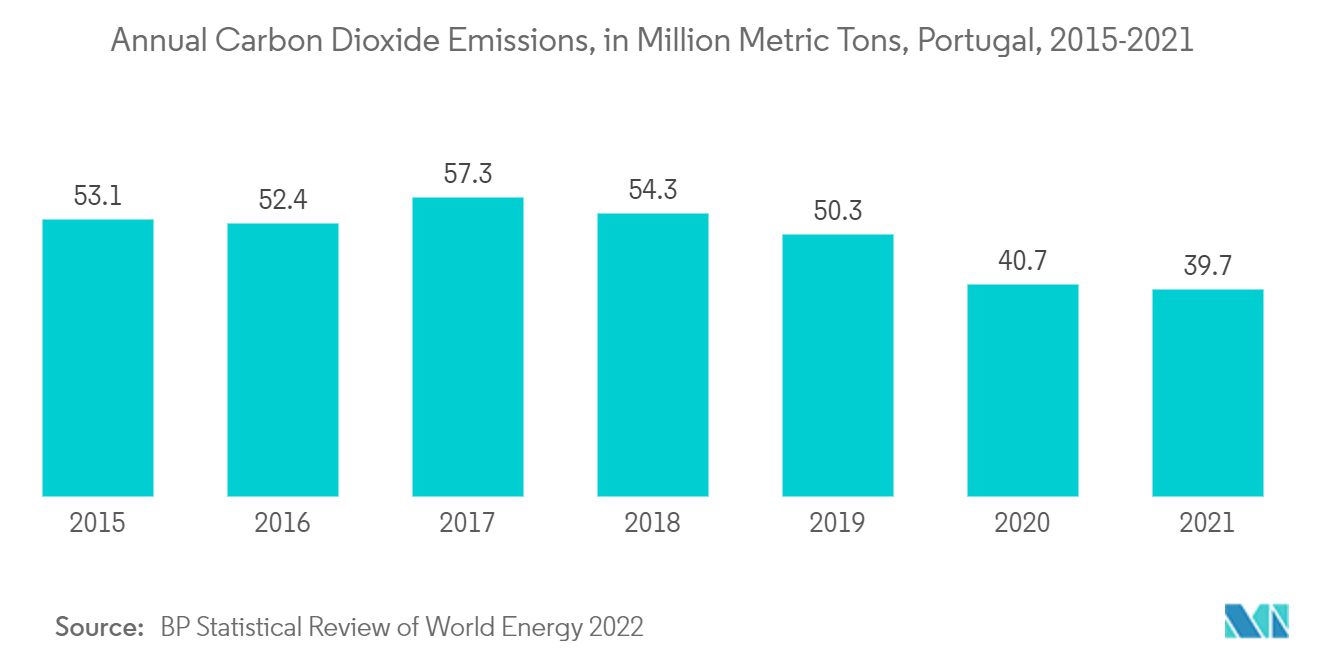Market Trends of Portugal Gas Generator Industry
This section covers the major market trends shaping the Portugal Gas Generator Market according to our research experts:
Less than 75 kVA Capacity Rating to Dominate the Market
- The country is consistently growing in the arena of urbanization. The proliferation of telecommunication centers, commercial complexes, small restaurants, and small industries, resulting in high demand for continuous power supply, has led to a boost in the gas generator market, notably less than or equal to 75 kVA. Since less than 75 kVA gas generators offer emergency backup power, their purchase is mainly based on price and necessity rather than efficiency. They are used to provide backup power and serve as the primary source of power in off-grid locations.
- The biggest driver of the gas-generator market is the data center plans in the country, requiring a more reliable power supply. In April 2022, Start Campus kickstarted the construction of the Sines 4.0 mega data center in Portugal. The 495MW project includes a nine-building data center, which is expected to be completed in 2027.
- Due to the change in the landscape for small businesses, especially in developing countries like Portugal, the demand for gas generators less than 75 kVA is expected to increase. Since there are many natural hazards causing power outages in the country, most households and shops prefer portable and affordable small generators to cope with power outages.
- Further, due to current government initiatives, such as smart cities and green building initiatives, urbanization is rising in Portugal. As of 2021, the country's urban population makes up 66.85% of the total population. Such initiatives are expected to demand gas generators during the forecast period, driving the market.

Government Initiatives to Reduce Carbon Emissions to Drive the Market
- The policies aided by the Portuguese government in favor of carbon neutrality in the energy generation industry are expected to propel the gas generator market in the country. The most recent example is the introduction of tax incentives for the electricity generated from low-carbon emission sources.
- In December 2021, the Portuguese government approved the climate policy, which sets the target to achieve carbon neutrality by 2045 instead of 2050, a more ambitious plan for the country. It sets the requirements for the design of public policies across economic sectors and levels of government requirements for the design of public policies across economic sectors and levels of government to make them abide by the climate laws, with the help of financial benefits and other incentives.
- According to the Green Growth Commitment, Portugal is expected to reduce greenhouse gas emissions (GHG emissions) by 30 to 40% by 2030 (52.7-61.5 million metric tonnes of carbon dioxide equivalent (MtCO2e)) compared to 2005.
- Moreover, the European Union is stringently introducing new policies for climate change and the reduction of carbon emissions. As per the EU climate law, the EU countries must cut greenhouse emissions by at least 55% by 2030 and make the EU climate neutral by 2050.
- Natural gas burns cleaner than other conventional fuels, which helps reduce GHG emissions. Further, stricter emission regulations are promoting the use of eco-friendly gas generators to counter high-pollution emission risks, which continues to drive the market.


